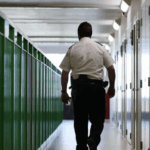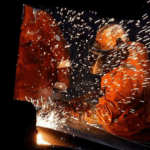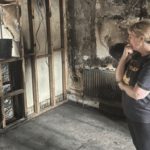Two American astronauts, Suni Williams and Butch Wilmore, who originally set out to spend eight days aboard the International Space Station (ISS), are now facing an extended stay until 2025 due to safety concerns with their Boeing Starliner spacecraft. Currently, they are living and working in space alongside nine other crew members in an environment comparable to a six-bedroom house, 400 kilometers above Earth.
The ISS, which is roughly the size of a football field, operates on a tightly regulated schedule. Every five minutes of the astronauts’ day is planned by mission control. Astronauts typically wake up around 06:30 GMT and start their day in small sleeping quarters within the ISS module Harmony. According to Nicole Stott, a former NASA astronaut who spent 104 days in space across two missions, these compartments are equipped with laptops and personal storage for items like photos and books.
After waking, astronauts use a small suction-based bathroom, where urine is usually recycled into drinking water. However, due to a fault on the ISS, urine is currently stored instead. The bulk of their time is devoted to maintenance and scientific experiments. Chris Hadfield, a Canadian astronaut who commanded Expedition 35, likens the ISS to “many buses all bolted together,” noting that it can be quite peaceful with limited social interaction.
Astronauts have access to six dedicated labs and wear monitors to track their physiological responses to the space environment. The ISS crew also engages in daily exercise routines to counteract the effects of zero gravity, which includes the use of a treadmill, a cycle ergometer, and the Advanced Resistive Exercise Device (ARED). Stott emphasizes that exercise is crucial to prevent the accelerated bone and muscle loss experienced in space.
Space also introduces unique challenges, such as the “space smell” described by Helen Sharman, the first British astronaut. Sharman notes that space has a distinct metallic odor, a result of free radicals reacting with oxygen inside the ISS. Despite the lack of laundry facilities, astronauts manage their clothing by discarding soiled items and using water blobs and soap to clean themselves.
Food aboard the ISS is reconstituted and stored in packets, with astronauts often sharing meals and receiving special treats from families. The psychological impact of seeing Earth from orbit is profound. Sharman reflects on the interconnectedness of humanity when viewing Earth from space, while Stott appreciates the collaboration among international crew members.
While Williams and Wilmore are currently adjusting to their prolonged mission, they and their fellow astronauts are dedicated to their work in space. As Hadfield puts it, “The greatest gift you can give a professional astronaut is to let them stay longer.”

















